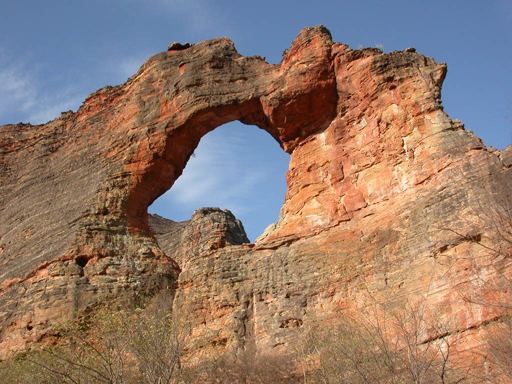Criteria iii Phone +55 89 3582-2085 | Type Cultural Reference no. 606 Designated as world heritage site 1991 (15th session) | |
 | ||
Area 1,291.4 km (498.6 sq mi) Region Latin America and the Caribbean Address Rua Doutor Luiz Paixão, 188 - Milonga, PI, 64770-000, Brazil Hours Open today · 8AM–12PM, 2–4PMThursday8AM–12PM, 2–4PMFriday8AM–12PM, 2–4PMSaturday8AM–12PM, 2–4PMSunday8AM–12PM, 2–4PMMonday8AM–12PM, 2–4PMTuesday8AM–12PM, 2–4PMWednesday8AM–12PM, 2–4PMSuggest an edit Management Chico Mendes Institute for Biodiversity Conservation Similar Serra da Canastra National, Chapada dos Veadeiro, Museu do Homem Americano, Lençóis Maranhenses National, Jalapão State Park | ||
Serra da capivara national park
Serra da Capivara National Park (Portuguese: Parque Nacional Serra da Capivara, [ˈpaʁki nɐsjoˈnaw ˈsɛʁɐ ðɐ kɐpiˈvaɾɐ], locally [ˈsɛɦɐ da kapiˈvaɾɐ]) is a national park in the Northeastern region of Brazil. The area has many prehistoric paintings.
Contents
- Serra da capivara national park
- Serra da capivara national park unesco nhk
- Location
- History
- Sitio do Meio
- References
Serra da capivara national park unesco nhk
Location
It is located in northeast state of Piauí, between latitudes 8° 26' 50" and 8° 54' 23" south and longitudes 42° 19' 47" and 42° 45' 51" west. It falls within the municipal areas of São Raimundo Nonato, São João do Piauí, Coronel José Dias and Canto do Buriti. It has an area of 1291.4 square kilometres (319,000 acres).
The Capivara-Confusões Ecological Corridor, created in 2006, links the park to the Serra das Confusões National Park.
History
The park was created to protect the prehistoric artifacts and paintings found there. It became a World Heritage Site in 1991. Its head archaeologist is Niède Guidon. Its best known archaeological site is Pedra Furada.
This area has the largest concentration of prehistoric sites in the Americas. Scientific studies confirm that the Capivara mountain range was densely populated in the pre-Columbian Era.
A newer site is Toca da Tira Peia, where the stone tools found may date to as early as 22,000 years ago. The site has been dated through optically stimulated luminescence.
Other important archaeological sites in the area are Toca da Pena, Baxao da Esperanca, and Sitio do Meio. Lapa do Boquete site is located directly south.
Sitio do Meio
Sitio do Meio is the second most important rock shelter in the area after Pedra Furada. It features fully Pleistocene dates and artefacts. The stone artefacts are better preserved because of the absence of waterfalls here. At least 98 stone tools seem older than 12,500 BP. They belong to the Upper Pleistocenic phase of Pedra Furada 3.
